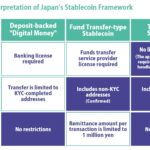In a significant development within the cryptocurrency landscape, World Liberty Financial (WLFI), a project backed by former President Donald Trump, has successfully concluded its token sale, amassing an impressive 0 million. This monumental raise positions WLFI among the upper echelons of cryptocurrency fundraising, placing it in the top ten of all time, as reported by ICODrops. To provide context, the record holder for token sales remains EOS, which previously garnered .21 billion in funding.
During an engaging session at the Consensus 2025 event held in Hong Kong, WLFI co-founder Zak Folkman highlighted the pivotal role played by Justin Sun, founder of Tron, who invested million in November 2024 and spurred further interest in the project. Folkman remarked on the challenges faced during WLFI’s launch phase, noting that initial skepticism from traditional crypto investors regarding the project’s backing made it difficult to gain traction.
“When we were launching this project, it was a very heated time,” Folkman stated, addressing the scrutiny the project faced due to its high-profile supporters.
One notable aspect of WLFI’s token sale is the limitation placed on its accessibility. The tokens were exclusively available to accredited investors and are subject to restrictions that prevent them from being transferred or publicly traded on exchanges. At this time, no specific date has been announced for when WLFI tokens might be listed on exchanges, leaving the crypto community eagerly anticipating further developments.
With this considerable funding achievement and backing from influential figures in the crypto space, WLFI’s future is attracting attention as it aims to impact the broader cryptocurrency ecosystem.

World Liberty Financial’s Token Sale Success
The recent token sale by World Liberty Financial (WLFI), supported by Donald Trump, raised nearly 0 million, marking a notable moment in the cryptocurrency landscape.
- Impressive Fundraising Total:
- WLFI’s 0 million raised positions it among the top-10 token raises, as reported by ICODrops.
- This amount is significant compared to the largest token sale, EOS, which raised .21 billion.
- Justin Sun’s Key Investment:
- Tron’s Justin Sun invested million into WLFI, contributing to the project’s recovery and momentum.
- His involvement helped shift perceptions of WLFI, attracting more investors amid initial skepticism.
- Criticism and Scrutiny:
- WLFI faced initial criticism for a slow momentum and involvement of controversial figures.
- This scrutiny created challenges in attracting traditional crypto venture capitalists.
- Exclusivity of Token Sale:
- The WLFI token sale was restricted to accredited investors, limiting access to a broader community.
- Tokens cannot be transferred or publicly traded on exchanges, which may impact liquidity and mainstream adoption.
- Future Outlook:
- A date for WLFI’s potential exchange listing has not been set, adding uncertainty for current and prospective investors.
- The project’s success could influence the broader cryptocurrency community and future fundraising efforts.
Comparing World Liberty Financial’s Token Sale with Industry Trends
The recent announcement of World Liberty Financial’s (WLFI) successful closure of its token sale, gathering an impressive 0 million, positions it prominently within the cryptocurrency fundraising landscape. This feat places it among the top earners in token sales, a domain where aspirational projects often face fierce competition. When examined alongside other significant initiatives like EOS, which amassed over billion, WLFI showcases both competitive advantages and potential drawbacks that could resonate throughout the crypto ecosystem.
Competitive Advantages: WLFI’s fundraising effort has been bolstered by the high-profile backing of Donald Trump and major investments from key players like Justin Sun of Tron fame. This association not only lends credibility to the project but also has the potential to attract a broader investor base. Furthermore, the high amount raised demonstrates considerable interest, suggesting that WLFI has effectively tapped into a niche market willing to engage with its vision. The exclusive nature of the token sale, limited to accredited investors, can create an aura of prestige and reduce volatility associated with public listings.
Conversely, the exclusivity and preliminary hurdles WLFI faces could create notable pitfalls. Detractors might argue that such restrictions alienate smaller investors, reducing the community-based support often vital for long-term project viability. Additionally, the initial sluggish momentum before Sun’s intervention reveals vulnerabilities in market perception and investor confidence, which could be detrimental if similar investments do not materialize down the line.
Potential Beneficiaries: Investors looking for novel opportunities within the crypto space could find WLFI appealing, especially those with a penchant for projects endorsed by influential figures. In contrast, these investments might present challenges for traditional venture capitalists who tend to be risk-averse and skeptical of projects tied to polarizing personalities. Moreover, the project’s framework could shape future discussions about the regulation of token sales, influencing how new projects approach funding and investor inclusion.
In summary, while WLFI’s strong fundraising results reflect its success in an increasingly competitive crypto environment, the implications of its funding model and the scrutiny surrounding its affiliations pose questions about long-term sustainability and community engagement. As such, stakeholders will need to navigate these complexities carefully if they aim to leverage WLFI’s momentum for future growth.

















